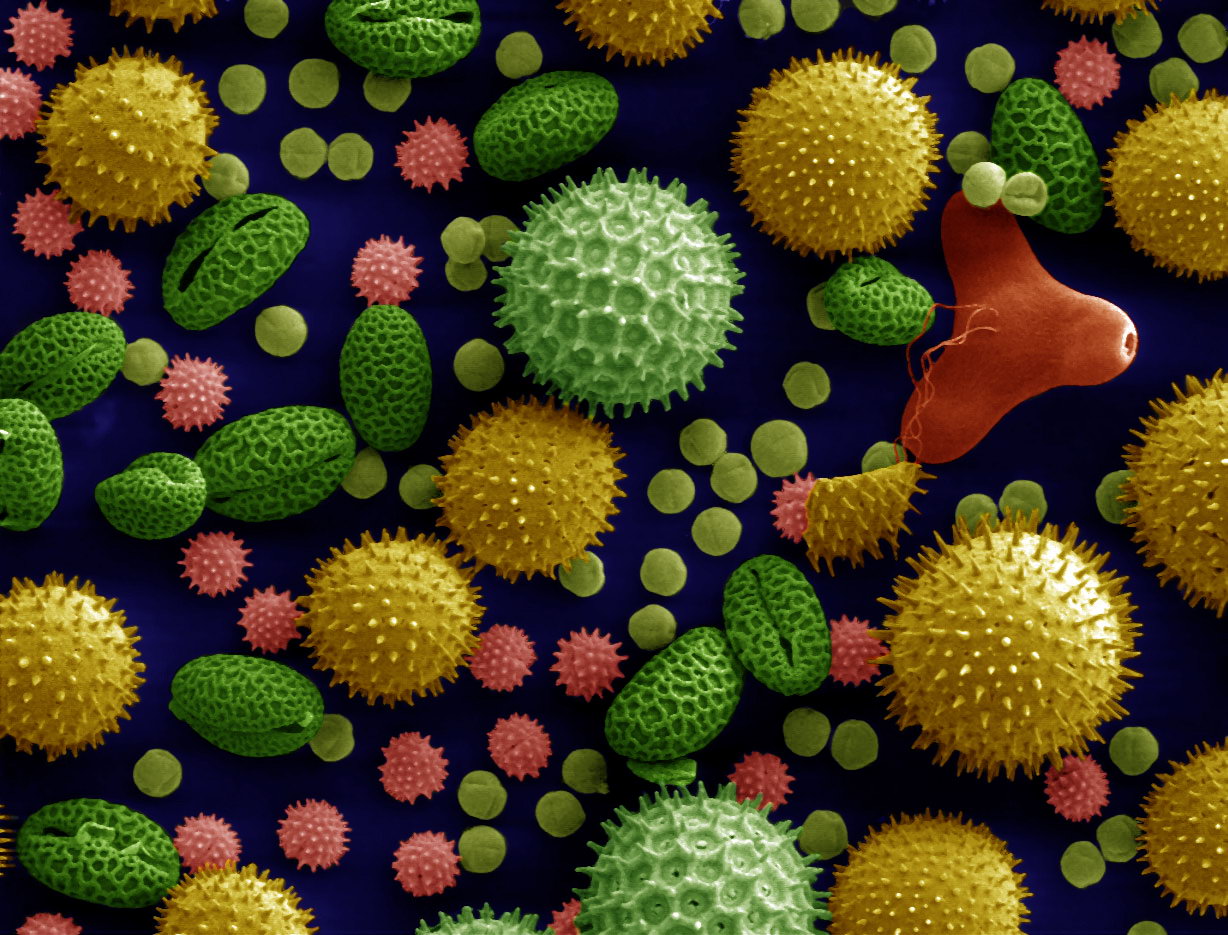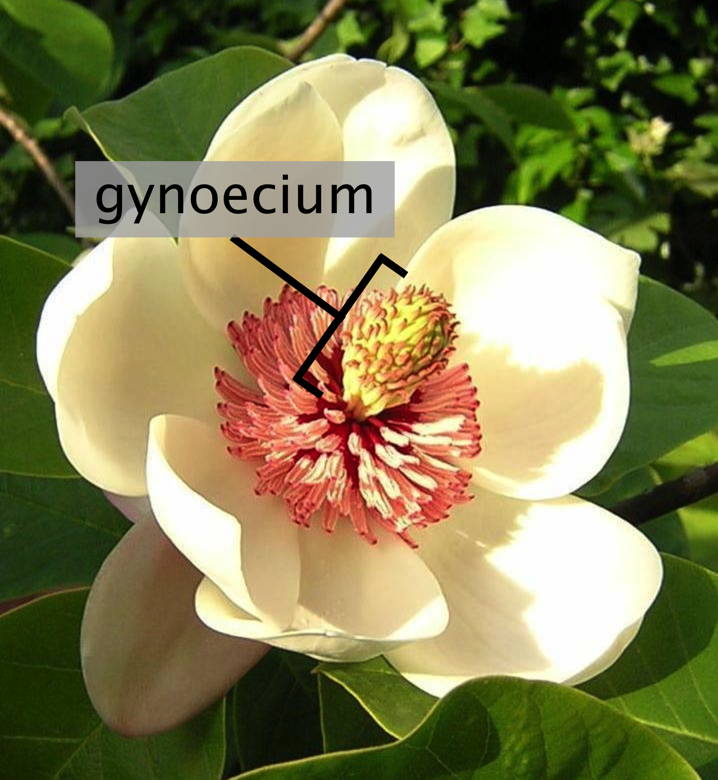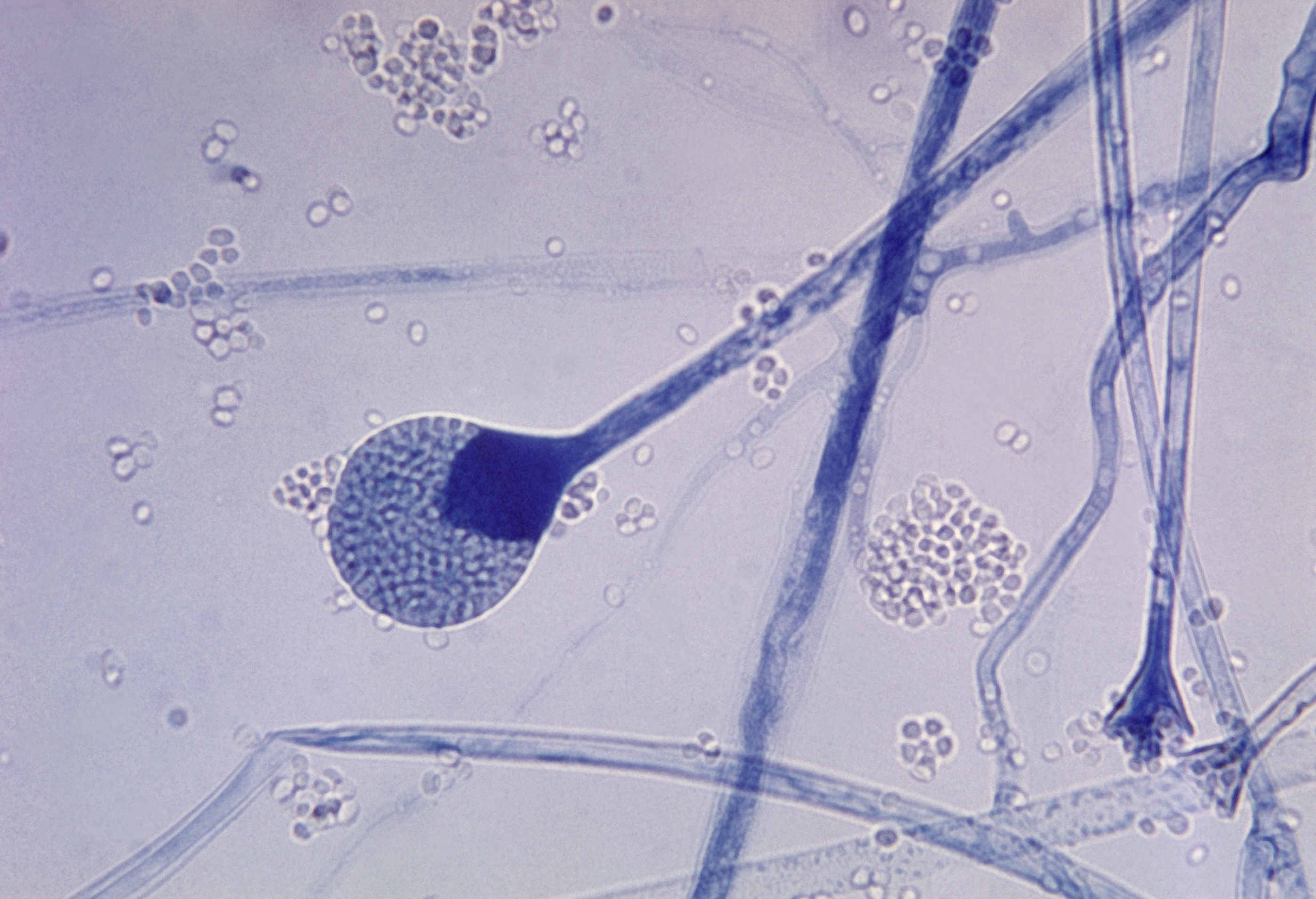|
Anther
The stamen (: stamina or stamens) is a part consisting of the male reproductive organs of a flower. Collectively, the stamens form the androecium., p. 10 Morphology and terminology A stamen typically consists of a stalk called the filament and an anther which contains sporangium, microsporangia. Most commonly, anthers are two-lobed (each lobe is termed a locule) and are attached to the filament either at the base or in the middle area of the anther. The sterile (i.e. nonreproductive) tissue between the lobes is called the Connective (botany), connective, an extension of the filament containing conducting strands. It can be seen as an extension on the dorsal side of the anther. A pollen grain develops from a microspore in the microsporangium and contains the male gametophyte. The size of anthers differs greatly, from a tiny fraction of a millimeter in ''Wolfia'' spp up to five inches (13 centimeters) in ''Canna iridiflora'' and ''Strelitzia nicolai''. The stamens in a flower ... [...More Info...] [...Related Items...] OR: [Wikipedia] [Google] [Baidu] |
Pollen
Pollen is a powdery substance produced by most types of flowers of seed plants for the purpose of sexual reproduction. It consists of pollen grains (highly reduced Gametophyte#Heterospory, microgametophytes), which produce male gametes (sperm cells). Pollen grains have a hard coat made of sporopollenin that protects the gametophytes during the process of their movement from the stamens to the pistil of flowering plants, or from the male Conifer cone, cone to the female cone of gymnosperms. If pollen lands on a compatible pistil or female cone, it Germination, germinates, producing a pollen tube that transfers the sperm to the ovule containing the female gametophyte. Individual pollen grains are small enough to require magnification to see detail. The study of pollen is called palynology and is highly useful in paleoecology, paleontology, archaeology, and Forensic science, forensics. Pollen in plants is used for transferring Ploidy#Haploid and monoploid, haploid male genetic ma ... [...More Info...] [...Related Items...] OR: [Wikipedia] [Google] [Baidu] |
Connective (botany)
In botany, the connective is the portion of sterile (i.e. nonreproductive) tissue of the anther between and interconnecting the two thecae, which forms a body with them and holds them together. It is usually underdeveloped and it is subject to great diversity of form, causing the thecae to protrude prominently. In some primitive angiosperms, the entire stamen may be more or less foliaceous, and the connective may be highly developed, causing the thecae to be widely separated. It appears to be analogous to the midrib of a leaf, and is only absent when an anther is strictly one-celled; that is to say, when the whole of the interior of the end of the stamen is converted into pollen. In some cases, the tissue has appendages of various shapes that are of structural importance (e.g., in the Melastomataceae Melastomataceae () is a family of dicotyledonous flowering plants found mostly in the tropics (two-thirds of the genera are from the New World tropics) comprising c. 175 genera ... [...More Info...] [...Related Items...] OR: [Wikipedia] [Google] [Baidu] |
Microspore
Microspores are land plant spores that develop into male gametophytes, whereas megaspores develop into female gametophytes. The male gametophyte gives rise to sperm cells, which are used for fertilization of an egg cell to form a zygote. Megaspores are structures that are part of the alternation of generations in many seedless vascular cryptogams, all gymnosperms and all angiosperms. Plants with heterospory, heterosporous life cycles using microspores and megaspores arose independently in several plant groups during the Devonian period. Microspores are haploid, and are produced from diploid microsporocytes by meiosis. Morphology The microspore has three different types of wall layers. The outer layer is called the perispore, the next is the exospore, and the inner layer is the endospore. The perispore is the thickest of the three layers while the exospore and endospore are relatively equal in width. Seedless vascular plants In heterosporous seedless vascular plants, modified ... [...More Info...] [...Related Items...] OR: [Wikipedia] [Google] [Baidu] |
Gametophyte
A gametophyte () is one of the two alternating multicellular phases in the life cycles of plants and algae. It is a haploid multicellular organism that develops from a haploid spore that has one set of chromosomes. The gametophyte is the sexual phase in the life cycle of plants and algae. It develops sex organs that produce gametes, haploid sex cells that participate in fertilization to form a diploid zygote which has a double set of chromosomes. Cell division of the zygote results in a new diploid multicellular organism, the second stage in the life cycle known as the sporophyte. The sporophyte can produce haploid spores by meiosis that on germination produce a new generation of gametophytes. Algae In some multicellular green algae ('' Ulva lactuca'' is one example), red algae and brown algae, sporophytes and gametophytes may be externally indistinguishable (isomorphic). In ''Ulva'', the gametes are isogamous, all of one size, shape and general morphology. Land plant ... [...More Info...] [...Related Items...] OR: [Wikipedia] [Google] [Baidu] |
Canna (plant)
''Canna'' or canna lily is a genus of flowering plants consisting of 10 species. It is the only genus in the family Cannaceae.The Cannaceae of the World, Hiltje Maas-van de Kamer, H. Maas-van der Kamer & Paulus Johannes Maria Maas, P.J.M. Maas, BLUMEA 53: 247–318 All of the genus's species are native to the Neotropical realm, American tropicsLamarck, Jean-Baptiste. ''Botanical Encyclelopédie''. and were naturalized in Europe, India and Africa in the 1860s.Chaté, E. (1867).'' Le Canna, son histoire, sa culture. ''Libraire Centrale d'Agriculture et de Jardinage Although they grow native to the tropics, most cultivars have been developed in temperateness, temperate climates and are easy to grow in most countries of the world, as long as they receive at least 6–8 hours average sunlight during the summer, and are moved to a warm location for the winter. See the Canna (Plant) Gallery, ''Canna'' cultivar gallery for photographs of ''Canna'' cultivars. Cannas are not true lili ... [...More Info...] [...Related Items...] OR: [Wikipedia] [Google] [Baidu] |
Gynoecium
Gynoecium (; ; : gynoecia) is most commonly used as a collective term for the parts of a flower that produce ovules and ultimately develop into the fruit and seeds. The gynoecium is the innermost whorl (botany), whorl of a flower; it consists of (one or more) ''#Pistil, pistils'' and is typically surrounded by the pollen-producing plant reproductive morphology, reproductive organs, the stamens, collectively called the androecium. The gynoecium is often referred to as the "female" portion of the flower, although rather than directly producing female gametes (i.e. egg cells), the gynoecium produces megaspores, each of which develops into a female gametophyte which then produces egg cells. The term gynoecium is also used by botanists to refer to a cluster of archegonia and any associated modified leaves or stems present on a gametophyte shoot in mosses, Marchantiophyta, liverworts, and hornworts. The corresponding terms for the male parts of those plants are clusters of antheridiu ... [...More Info...] [...Related Items...] OR: [Wikipedia] [Google] [Baidu] |
Sporangium
A sporangium (from Late Latin, ; : sporangia) is an enclosure in which spores are formed. It can be composed of a unicellular organism, single cell or can be multicellular organism, multicellular. Virtually all plants, fungus, fungi, and many other groups form sporangia at some point in their biological life cycle, life cycle. Sporangia can produce spores by mitosis, but in land plants and many fungi, sporangia produce genetically distinct haploid spores by meiosis. It's outdated name, sporange, is one of the few perfect rhymes for Orange (colour), orange. Fungi In some phyla of fungi, the sporangium plays a role in asexual reproduction, and may play an indirect role in sexual reproduction. The sporangium forms on the sporangiophore and contains Ploidy, haploid Cell nucleus, nuclei and cytoplasm. Spores are formed in the sporangiophore by encasing each haploid nucleus and cytoplasm in a tough outer membrane. During asexual reproduction, these spores are dispersed via wind and g ... [...More Info...] [...Related Items...] OR: [Wikipedia] [Google] [Baidu] |
Locule
A locule (: locules) or loculus (; : loculi) is a small cavity or compartment within an organ or part of an organism (animal, plant, or fungus). In angiosperms (flowering plants), the term ''locule'' usually refers to a chamber within an ovary (gynoecium or carpel) of the flower and fruits. Depending on the number of locules in the ovary, fruits can be classified as (uni-locular), , , or . The number of locules present in a gynoecium may be equal to or less than the number of carpels. The locules contain the ovules or seeds. The term may also refer to chambers within anthers containing pollen. In ascomycetous fungi, locules are chambers within the hymenium The hymenium is the tissue layer on the hymenophore of a fungal fruiting body where the cells develop into basidia or asci, which produce spores. In some species all of the cells of the hymenium develop into basidia or asci, while in oth ... in which the perithecia develop. References Plant anatomy Plant ... [...More Info...] [...Related Items...] OR: [Wikipedia] [Google] [Baidu] |
Lacandonia Brasiliana
''Lacandonia'' is a mycoheterotrophic plant that contains no chlorophyll and has the unusual characteristic of inverted positions of the male (androecium) and female (gynoecium) floral parts, something that had not been seen in any other plants, with the exceptions of '' Trithuria'' and on occasion the related '' Triuris brevistylis''. Description ''Lacandonia '' is a small, mycoheterotrophic plant that lacks chlorophyll and has a rhizomatous growth pattern. This genus exhibits racemous inflorescences and small, bract-like leaves. The flowers are actinomorphic and are considered "inverted" from the typical flower arrangement–usually 3 (but sometimes two to four) male stamens are in the center of the flower, surrounded by 60 to 80 female pistils. This characteristic, where the positions of the androecium and the gynoecium are reversed, is unique in the known and described taxa of the flowering plants.Vázquez-Santana, S., Engleman, E. M., Martínez-Mena, A., and Márquez-G ... [...More Info...] [...Related Items...] OR: [Wikipedia] [Google] [Baidu] |
Lacandonia Schismatica
''Lacandonia schismatica'' is a species of plant in the Triuridaceae family which has a symbiotic relationship with fungi, known as myco-heterotrophy. It is endemic to Lacandon Jungle in the State of Chiapas in southern Mexico. It is known from very few populations and is considered endangered by the researchers who investigate this species. It, and its recently discovered relation Lacandonia braziliana, are the only known flowering plants which in its natural population has a spatial inversion of the reproductive floral whorls (ie stamens and carpels): the 2 to 4 stamens are positioned centrally within the flower, and the 60 to 80 carpels arranged in a ring around them. The pollen grain never leaves the anther, but sends the pollen tube backwards through the length of the stamen, across the receptacle and then into the pistil from below. ''Lacandonia schismatica'' is known from several small populations at altitudes around in the Lacandon Jungle. It grows in shady sites within ... [...More Info...] [...Related Items...] OR: [Wikipedia] [Google] [Baidu] |
Reproductive Organ
A sex organ, also known as a reproductive organ, is a part of an organism that is involved in sexual reproduction. Sex organs constitute the primary sex characteristics of an organism. Sex organs are responsible for producing and transporting gametes, as well as facilitating fertilization and supporting the development and birth of offspring. Sex organs are found in many species of animals and plants, with their features varying depending on the species. Sex organs are typically differentiated into male and female types. In animals (including humans), the male sex organs include the testicles, epididymides, and penis; the female sex organs include the clitoris, ovaries, oviducts, and vagina. The testicle in the male and the ovary in the female are called the ''primary sex organs''. All other sex-related organs are known as ''secondary sex organs''. The outer parts are known as the genitals or external genitalia, visible at birth in both sexes, while the inner parts are refe ... [...More Info...] [...Related Items...] OR: [Wikipedia] [Google] [Baidu] |








